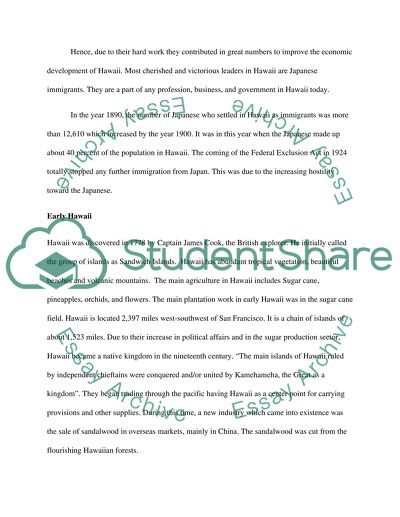Cite this document
(“Japanese Immigration to Hawaii Essay Example | Topics and Well Written Essays - 2500 words”, n.d.)
Retrieved from https://studentshare.org/environmental-studies/1416867-japanese-immigration-to-hawaii
Retrieved from https://studentshare.org/environmental-studies/1416867-japanese-immigration-to-hawaii
(Japanese Immigration to Hawaii Essay Example | Topics and Well Written Essays - 2500 Words)
https://studentshare.org/environmental-studies/1416867-japanese-immigration-to-hawaii.
https://studentshare.org/environmental-studies/1416867-japanese-immigration-to-hawaii.
“Japanese Immigration to Hawaii Essay Example | Topics and Well Written Essays - 2500 Words”, n.d. https://studentshare.org/environmental-studies/1416867-japanese-immigration-to-hawaii.


